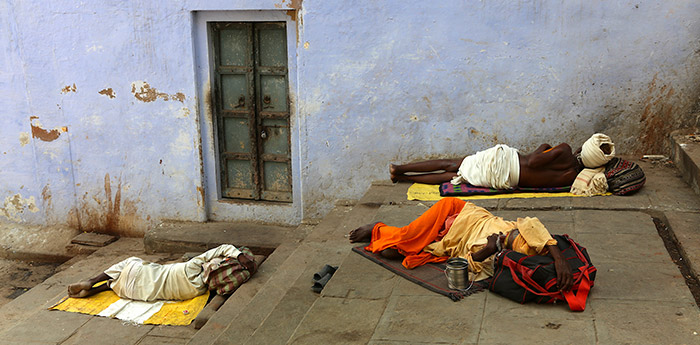End poverty in all its forms everywhere

Even before the coronavirus disease (COVID-19) pandemic, progress towards Goal 1 had slowed, and the world was not on track to ending extreme poverty by 2030. Now, as the world anticipates the worst economic fallout since the Great Depression, tens of millions of people will be pushed back into poverty, undoing years of steady improvement. As the economic impacts of the pandemic begin to be felt more strongly, the importance of robust social protection systems for safeguarding the poor and vulnerable is becoming clearer than ever. So, too, is the need for effective emergency preparedness, both for pandemics and other hazards that cause disasters.
COVID-19 shifts forecast on the global goal to end extreme poverty
The share of the world’s population living in extreme poverty declined from 15.7 per cent in 2010 to 10.0 per cent in 2015. However, the pace of global poverty reduction has been decelerating. Nowcast estimates put the global poverty rate in 2019 at 8.2 per cent.
Even before COVID-19, baseline projections suggested that 6 per cent of the global population would still be living in extreme poverty in 2030, missing the target of ending poverty. Assuming the pandemic remains at levels currently expected and that activity recovers later this year, the poverty rate is projected to reach 8.8 per cent in 2020. This is the first rise in global poverty since 1998, and close to the 2017 level. An estimated 71 million additional people will be living in extreme poverty due to COVID-19. Southern Asia and sub-Saharan Africa are expected to see the largest increases in extreme poverty, with an additional 32 million and 26 million people, respectively, living below the international poverty line as a result of the pandemic.
Proportion of people living below $1.90 a day, 2010–2015, 2019 nowcast, and forecast before and after COVID-19 (percentage)
Working poverty is expected to increase sharply as a result of the pandemic
The share of the world’s workers living in extreme poverty fell by half over the last decade: from 14.3 per cent in 2010 to 7.1 per cent in 2019. However, the pace of progress has slowed since 2013, requiring reinvigorated efforts to reach the 2030 target. Moreover, the impacts of COVID-19 are projected to push millions more into poverty. As of April 2020, recommended or required workplace closures around the world affected 81 per cent of employers and 66 per cent of own-account workers, severely limiting jobs and income.
The gender gap in working poverty had almost been bridged, but evidence is emerging that women are being disproportionally affected by the pandemic. Young workers are exposed to poverty more systematically than adults, a result of inadequate earnings and deficits in job quality. In 2019, 12.8 per cent of workers between the ages of 15 and 24 lived in poverty, compared with 6.3 per cent of workers over the age of 24, with the difference between youth and adult working poverty rates decreasing only marginally since 2000. These disparities are likely to be exacerbated by the COVID-19 crisis, which has already led to a sharp increase in unemployment and underemployment, a decline in labour income and job-quality challenges.
Proportion of employed population living below $1.90 a day, 2010 and 2019 (percentage)
Social protection coverage varies widely across regions, with many left exposed in the current crisis
The COVID-19 pandemic will have both immediate and long-term economic consequences for people across the globe. Strong social protection systems are essential for mitigating the effects and preventing many people from falling into poverty. Nevertheless, 55 per cent of the world’s population – about 4billion people – did not benefit from any form of social protection in 2016. Only 22 per cent of unemployed workers were covered by unemployment benefits. As of February 2020, only 87 countries had unemployment protection programmes anchored in national legislation, and only 34 of these countries covered the self-employed.
The extent of unemployment benefit coverage varies substantially across regions. Half of unemployed people in Australia and New Zealand receive unemployment payments, and 44 per cent in Europe and Northern America. In contrast, just 3 per cent of the unemployed in sub-Saharan Africa and 12 per cent in Latin America and the Caribbean receive such payments.
Differences across regions in coverage of social assistance cash benefits for vulnerable groups – children, people of working age and older persons not protected by contributory schemes – are similarly pronounced. Sixty-one per cent of people in these groups receive cash benefits in Europe and Northern America, compared with 4 per cent in Central and Southern Asia.
Proportion of vulnerable population receiving social assistance cash benefits, and unemployed persons receiving unemployment cash benefits, 2016 (percentage)
Note: Data for Northern Africa and Western Asia and for Oceania (excluding Australia and New Zealand) are not shown due to low population coverage of available data. Data on unemployment benefits are not shown for Central and Southern Asia due to low population coverage of this data for Southern Asia.
Disasters affect least developed countries disproportionately
Biological hazards such as COVID-19, along with other hazards such as hurricanes, floods, earthquakes and wildfires, cause disasters and worsen poverty. Based on the latest reporting under the Sendai Framework monitoring process from 80 countries in 2018, 23,458 deaths and 2,164 persons missing were attributed to disasters. Direct economic losses of $23.6 billion were reported by 63 countries, of which 73 per cent ($17.1 billion) were recorded in the agricultural sector and 16 per cent ($3.8 billion) in the housing sector.
Least developed countries (LDCs) were disproportionately affected by disasters in 2018. The 17 LDCs reporting disaster-related losses accounted for 14 per cent of the total population of the 80 countries reporting such losses, but over 29 per cent of the total reported deaths and missing persons attributed to disasters. The economic impacts of disasters were also larger for LDCs, relative to the size of their economies. The 17 LDCs reporting economic losses made up 2 per cent of the GDP of all countries reporting such losses, but suffered 10 per cent of the total direct economic losses.

